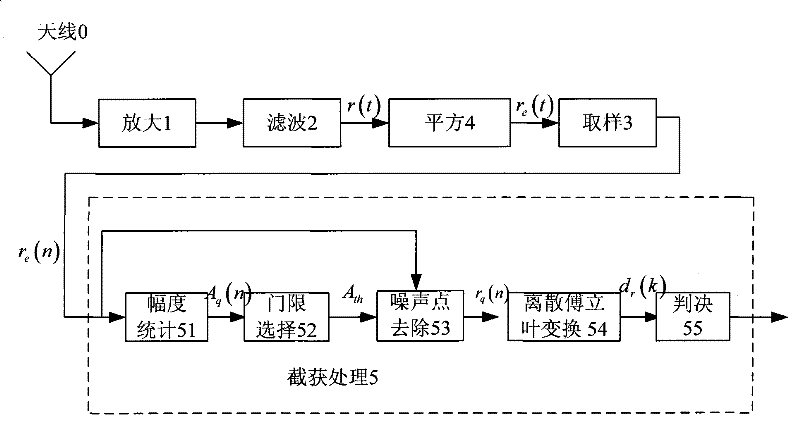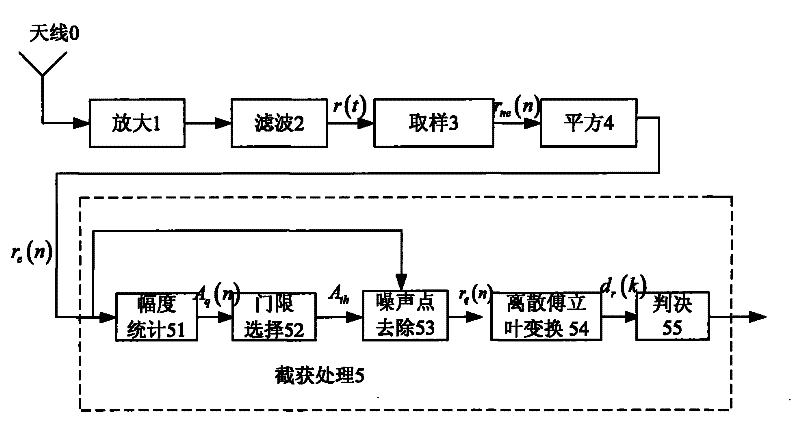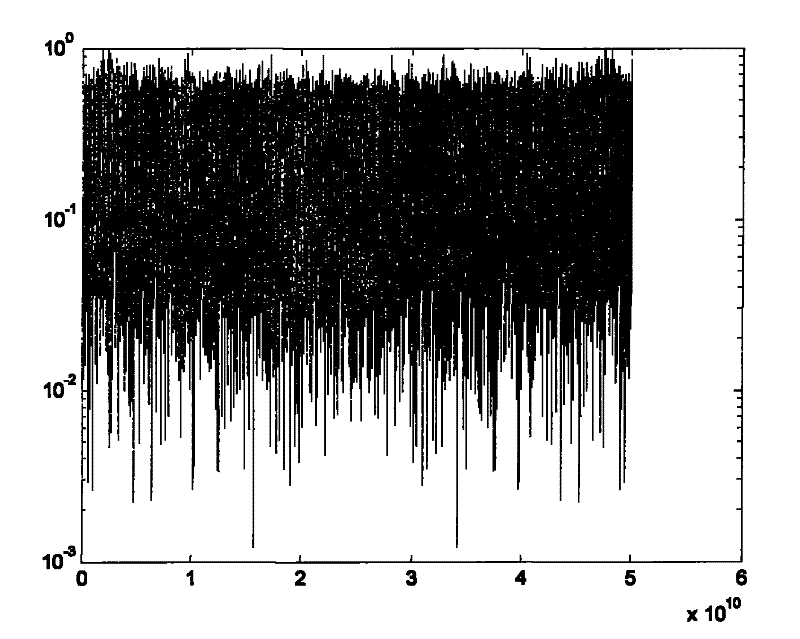Method for interception of impulse radio signal based on amplitude statistics
A technology of pulse radio and amplitude statistics, applied in electrical components, transmission systems, etc., can solve the problems of unable to intercept pulse radio signals, and achieve the effect of improving the effects of inability to intercept, large instantaneous amplitude, and low duty cycle
- Summary
- Abstract
- Description
- Claims
- Application Information
AI Technical Summary
Problems solved by technology
Method used
Image
Examples
Embodiment 1
[0014] Embodiment 1: Interception of pulsed radio signals based on amplitude statistics after square operation and sampling
[0015] This embodiment adopts the interception of pulsed radio signals based on amplitude statistics after the square operation and sampling, with figure 1 The frame of interception and processing of pulsed radio signal based on amplitude statistics is given figure 1 . The specific processing process is: the radio waves in the space received by the antenna 0 are amplified by the amplification step 1 and sent to the filtering step 2 for filtering to obtain the received signal r(t), and the signal r(t) is obtained by the square operation 4 squared signal r e (t)=r 2 (t), at sampling step 3 for the squared signal r e (t) Sampling to obtain the squared sampling sequence r e (n), the squared sampling sequence r e (n) send to interception processing step 5 and carry out interception algorithm processing, promptly obtain decision result; Here the amplifi...
Embodiment 2
[0027] Embodiment 2: Interception of pulsed radio signals based on amplitude statistics based on sampling first and then square operation
[0028] This embodiment adopts the interception of pulsed radio signals based on amplitude statistics after the square operation and sampling, with figure 2 The frame of interception and processing of pulsed radio signal based on amplitude statistics is given figure 2 . The specific processing process is as follows: the radio waves in the space received by the antenna 0 are amplified by the amplification step 1 and then sent to the filtering step 2 for filtering to obtain the received signal r(t), and the sampling sequence r is obtained by the sampling step 3 ne (n)=r(nT), and then get the sampling sequence r after the square operation step 4 e (n), sent to the interception processing step 5 to carry out the interception algorithm processing, namely to obtain the judgment result; here the amplifier adopted in the amplification step 1 ca...
PUM
 Login to View More
Login to View More Abstract
Description
Claims
Application Information
 Login to View More
Login to View More - R&D
- Intellectual Property
- Life Sciences
- Materials
- Tech Scout
- Unparalleled Data Quality
- Higher Quality Content
- 60% Fewer Hallucinations
Browse by: Latest US Patents, China's latest patents, Technical Efficacy Thesaurus, Application Domain, Technology Topic, Popular Technical Reports.
© 2025 PatSnap. All rights reserved.Legal|Privacy policy|Modern Slavery Act Transparency Statement|Sitemap|About US| Contact US: help@patsnap.com



